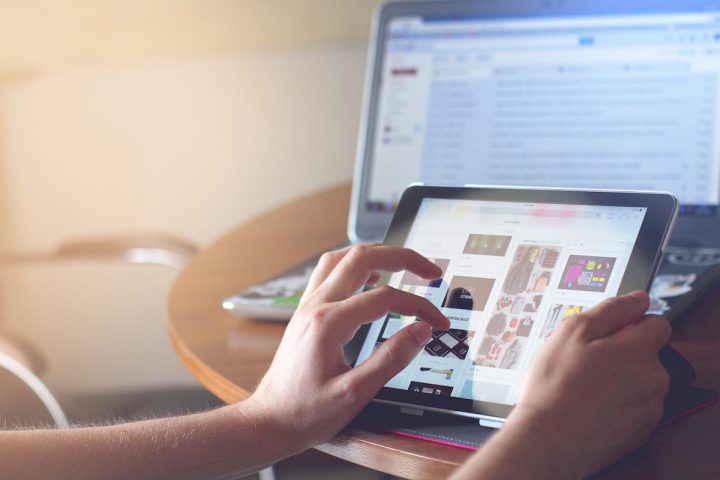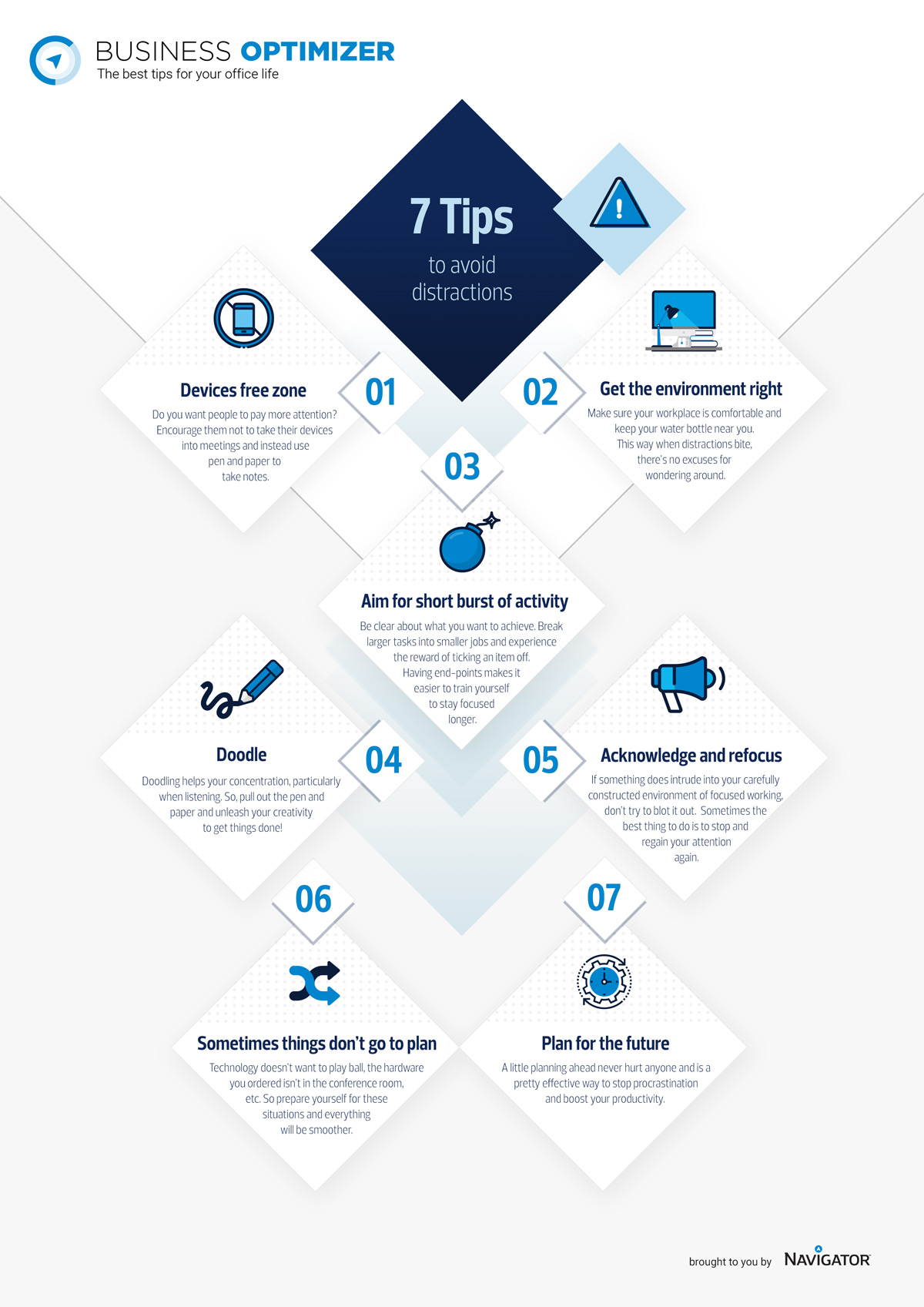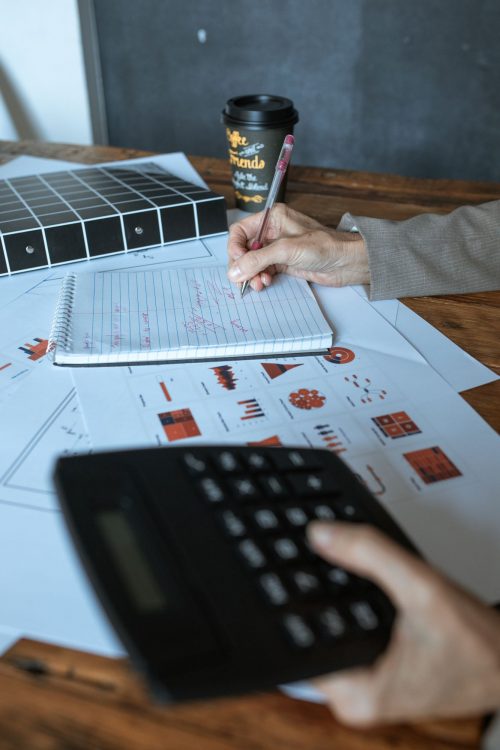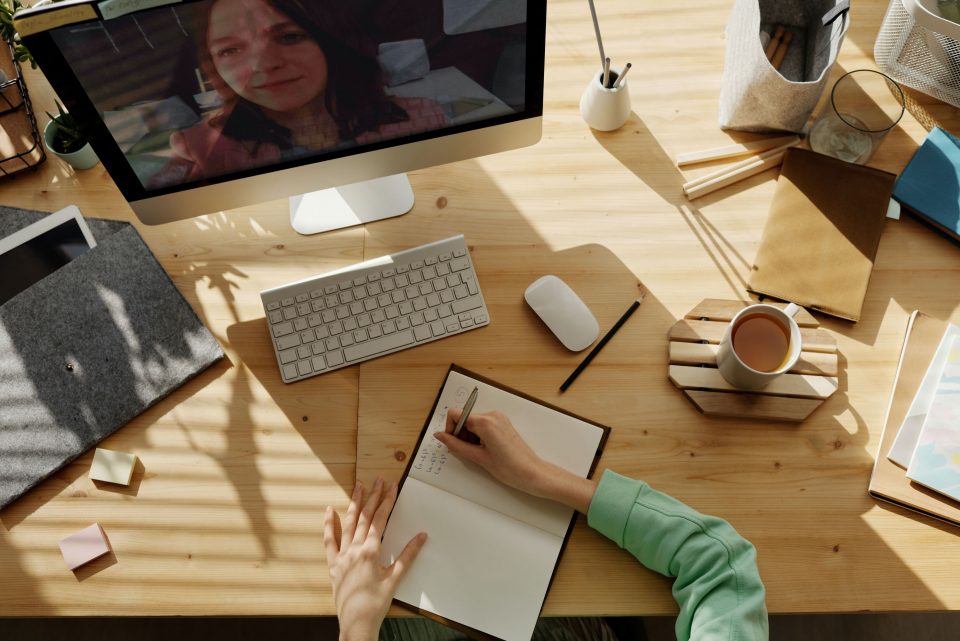#1 Ban devices
When you invite colleagues to a meeting, let them know it will be a device-free meeting. Leave a tray at the door and ask everyone to put their phones, tablets, and other devices into the tray as they enter. Encourage everyone to take notes with a pen and paper – even the minutes don’t need to be done on a laptop; they can be typed up and distributed later. Not only does it stop people fidgeting with their digital devices and you know they are paying attention, studies have shown that writing things down aids our retention and later recall of information.
You can eliminate the pings of digital interruption at your desk too; there are plenty of productivity apps available that temporarily block your email and social media notifications for a short time – facilitating similarly short bursts of highly productive working without distraction. Or, where possible, work offline completely.
#2 Get the environment right
Make sure your workspace is comfortable. In the meeting room, make sure everyone has access to water. Keep your water bottle at your desk, so you stay hydrated and don’t have an excuse to wander off to the water cooler when distraction bites. Let your colleagues know you are focusing on a particular piece of work. Wearing your headphones (even if you’re not listening to anything) can be a powerful signal you shouldn’t be interrupted.
#3 Aim for short bursts of activity
Be clear about what you want to achieve. Break larger tasks into smaller jobs. Write a checklist and as you tick an item off, give yourself a little reward – whether a walk round the block, a stroll to the coffee shop, or even crossing that item off your list can be a reward in itself. Having an end-point makes it easier to train yourself to stay focused longer; at least until you have finished the task at hand.
#4 Doodle
It sounds counter-intuitive, right? But doodling has been shown to help with concentration, particularly when listening. So, pull out the pen and paper, reinstate the desk pad, revel in your sketches and unleash some of the creativity you need to get through that meeting, phone call, or group chat.
#5 Acknowledge and refocus
If something does intrude into your carefully constructed environment of focused working, don’t try to blot it out. If the noise from the building site down the street is drowning out your presentation, call it out. Everyone in the room can relax, acknowledge it, and then you can bring their attention back to the presentation, distraction carefully neutralized.
#6 Plan for failure
Sometimes things don’t go to plan: technology doesn’t want to play ball, the hardware you ordered isn’t in the conference room, the available bandwidth is just a trickle. Have a back-up plan. For example, if you’re giving a presentation, know it well enough to progress without the PowerPoint on screen, and have paper handouts ready just in case.
#7 Plan for the future
In meetings, take minutes and distribute them afterwards to everyone who attended so everyone is clear about the output and their responsibilities. If you’re scheduling a follow-up meeting, get the date and time booked while everyone is still in the room. If you’re giving yourself a little break before moving onto the next task on your list, get everything you need ready on your desktop. This way, you are able to quickly get started as soon as you get back to your desk. Make it easy for your next short bust of high concentration to get underway quickly without procrastination or distraction.







